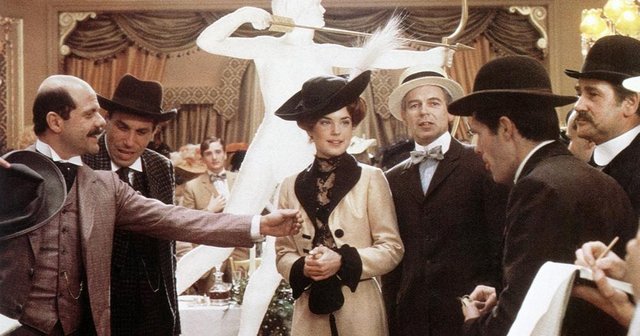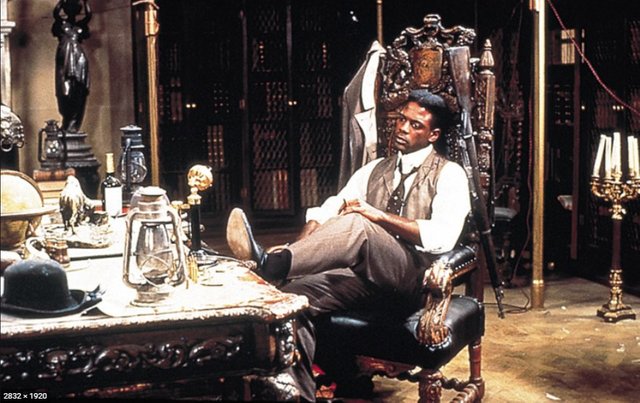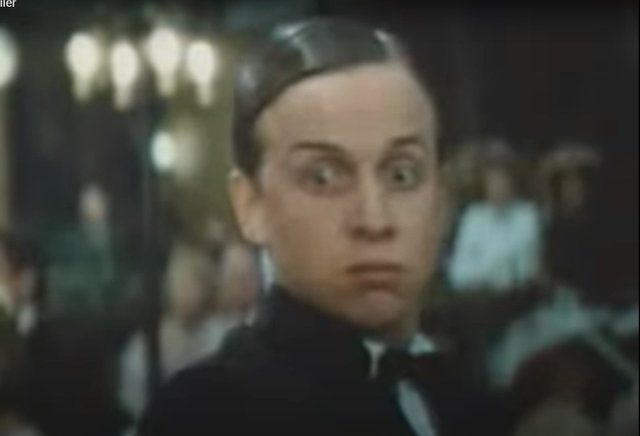Ragtime (Part 1 of 2)
Amadeus was the first movie of Miloš Forman’s that I’ve seen and I was charmed. To this day I love to watch some of its iconic scenes.
This one is where to a priest saying “All people are equal in God’s eyes” Salieri responds “Are they?”
This one that is one of the best depictions of a creative process
And, of course, this one when Mozart makes Salieri look mediocre in front of the emperor
Then, a few years ago, I watched Forman’s movie Goya’s Ghost I was hugely disappointed. Goya is one of my favorite painters and I have a certain image of him from his paintings and also from namesake book by Lion Feuchtwanger.
Everything in this movie contradicted that image starting from the wrong actor cast for the role of a sucked out of the finger story. So the pendulum of my regard for Forman’s movie moved all the way from “very much” to “not at all.”
Naturally, that when a friend advised watching another Forman’s movie “Ragtime,” I was cautious.
Probably, like most the people, my knowledge of this time mostly comes from famous Scot Joplin’s rags “Entertainment” and “Maple Leaf.”
and this little charming clip of piano contest from the movie about him
Other than that, Ragtime in my perception was the time when people walked making jerky choppy movements like so.
Anyhow, I watched the move something about it bothered me. That “something” was hard to pinpoint. The acting was good, and the overall background that conveyed this comic herky-jerkiness of the time, the music, and somewhat chaotic movements of the crowds on the streets. Perhaps this was Forman’s intent, similar to the one in “Goya’s Ghost” movie, make a viewer “feel the pulse of time” so to speak.
I’d say that his view on Ragtime in the movie is not realistic, more of a caricature, homage to silent movies with its primitive cinematographic techniques, and low-frequency frame rate. Still, that wasn’t it. That actually resonated with my perception of that time.

However, the background alone cannot hold the viewer’s attention. The movie needed some supportive stories. Having not read the underlying novel, I don’t know how much of the movie’s story was adopted and how much of it was Foreman’s rework.
The overall movie canvas is composed of many threads that lack a thoughtful unity. Instead, it feels like a blanket made if patches connected to each other by a loose thread. Perhaps Forman wanted to make them having equal demonstrative weight. That didn’t come out as one of the stories turned out to have much more gravity and overpowered all others like a vortex that spins everything around it. Then again, this could be deliberate. It’s hard to say.
In an odd way, all people are connected just by mare fact that they live at the same time or exist in the same space. We live next to neighbors to the right and to the left, tell them “hi” when we meet, but might never have any contact that affects our life, and in real life this is ok. However, in a novel or a movie, several narrative threads should converge in some meaningful way. At least, this is my personal preference.
Let’s take a famous movie like Pulp Fiction. There are many characters that are involved in several parallel narrative threads. However, they are all equally important in the overall composition, at some point they converse in a meaningful way so that yanking out one of them would damage the overall understanding.
In Ragtime, however, that is not so, or at least, it didn’t seem so to me.
The theme of the movie was to show how unfairly biased was the contemporary law toward black people.
Illustrating this theme is the story of a deliberate and useless insult to a black man-made by racist white men, and the subsequent attempt of the black man by the name of Coalhouse Walker Jr, to defend his honor in all possible legal ways. Then, seeing that the law was completely biased against him, he resorted to violence, and died in the pursuit of regaining his honor.
One of the important moments of the movie was Coalhouse’s dialog with Mr. Washington who was a proponent of peaceful protest against the biased law. Regardless of what was directors’ intent for inserting these scenes, this was a solid narrative, a good enough story in its own right, perhaps deserving a standalone movie.

However, apparently, this wasn’t enough for the director and he piggybacked to it another story of a crazy white man, industrialist Harry Kendall, whom the same law allowed to get away with murder literally and figuratively. When a famous architect Stanford White unveils a nude statue, modeled after former chorus girl Evelin and now Kendall’s wife, Kendall demands White to remove the statue, and when White refuses, shoots him dead.

In the director’s mind, this was the cornerstone conflict of that historical period and that’s why this story dominated the movie.
After Kendall’s short stay in the nuthouse, he was released.
In the movie this event sequenced right after the moment when police kill unarmed Coalhouse, who came out of the building where he hid, to give himself up. Kendall’s release was that red-herring that pointed at a complete impropriety and the biased nature of the “Ragtime” law.
These two threads were independent and could have been easily formatted as separate films. However, being in the same movie, they needed some convergence and the screenwriter/director attempted to build the connective “wrapper” around them. That wrapper is what made the movie so discouraging for me to watch.
I would have to give a short description of the transpired events to make sure my point comes across as the movie apparently is considered iconic and made a big splash in its time.